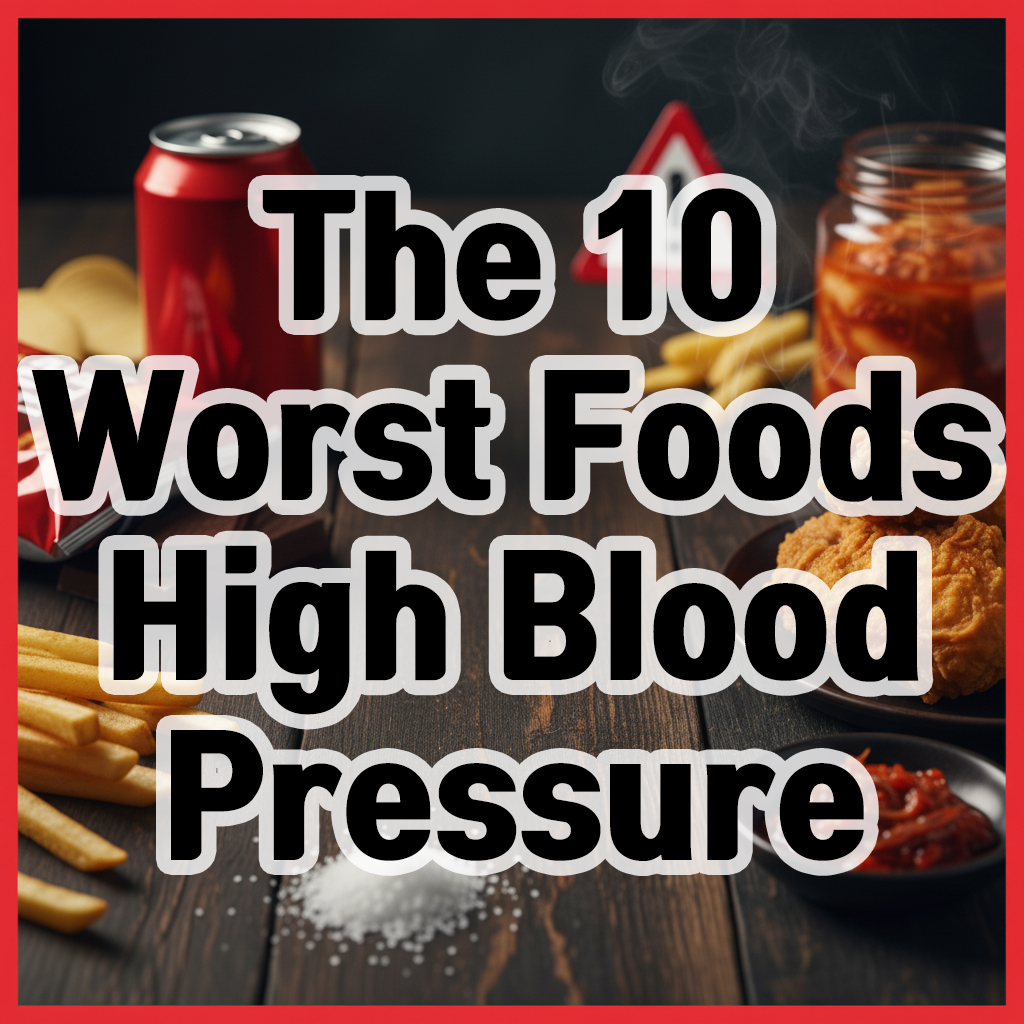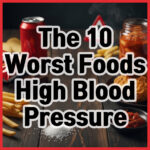
High blood pressure, often called the “silent killer,” is one of the most common chronic conditions in modern society. It develops quietly, often without noticeable symptoms, but can suddenly lead to life-threatening complications. Among the many factors that influence blood pressure, diet plays a crucial role. What you eat every day can either help stabilize your blood pressure or push it even higher, putting your health at risk.
Today, let’s take a closer look at 10 foods that people with hypertension should avoid, along with practical tips for healthier eating habits. By the end of this post, I hope you’ll walk away with helpful knowledge to make your dining table healthier and your life safer.
🚨 10 Foods People with High Blood Pressure Should Avoid
1. High-Sodium Processed Foods
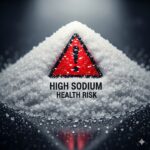
Examples: instant noodles, canned foods, frozen meals
Sodium is the number one culprit for raising blood pressure. Too much sodium increases fluid retention, which boosts blood volume and puts more pressure on your arteries. Processed foods often contain excessive amounts of sodium to extend shelf life and enhance flavor.
Solution: Cut back on processed foods and cook with fresh ingredients whenever possible. Check nutrition labels for sodium content, and use herbs and spices instead of salt to add flavor.
2. Salty Pickled and Fermented Foods
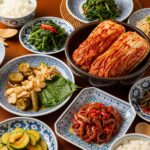
Examples: kimchi, pickled vegetables, salted seafood
While popular in many Asian diets, these foods are often packed with sodium. Even small portions can exceed the daily recommended sodium intake.
Solution: Choose low-sodium versions, rinse kimchi lightly before eating, and keep servings small. Try natural seasonings like kelp or anchovies to reduce salt in your meals.
3. Foods High in Saturated and Trans Fats
Examples: fried foods, processed meats (sausages, ham, bacon), butter, margarine
These fats raise LDL cholesterol (“bad cholesterol”), promote atherosclerosis, and increase blood pressure risk.
Solution: Opt for grilling, baking, or steaming instead of frying. Replace butter and margarine with healthier oils like olive or canola oil. Choose lean protein sources such as poultry or legumes instead of processed meats.
4. Sugary Foods and Drinks
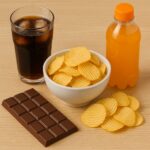
Examples: soda, candy, chocolate, sweetened beverages
Sugar may not raise blood pressure directly, but overconsumption can cause weight gain and insulin resistance, both of which increase hypertension risk.
Solution: Replace sugary drinks with water or unsweetened tea, and snack on nuts or fresh fruit instead of sweets.
5. Red Meat
Examples: fatty cuts of beef or pork
Red meat, especially fatty cuts, contains high levels of saturated fat and cholesterol, which are harmful for blood pressure management.
Solution: Choose lean cuts only, and limit portions. Better yet, opt for chicken breast, fish, or plant-based proteins like beans.
6. Alcohol
Excessive drinking can raise blood pressure immediately and increase the risk of chronic hypertension. It can also interfere with blood pressure medications.
Solution: The best choice is to avoid alcohol. If unavoidable, limit yourself to one or two drinks per day at most.
7. High-Caffeine Beverages
Examples: coffee, black tea, energy drinks
Caffeine can cause temporary spikes in blood pressure. Sensitivity varies by individual, but those with hypertension should be cautious.
Solution: Switch to herbal teas or decaffeinated options, and monitor how your blood pressure responds after caffeine consumption.
8. Refined Carbohydrates
Examples: white rice, white bread, pasta
Refined carbs spike blood sugar quickly, triggering insulin release and weight gain, which can raise hypertension risk.
Solution: Choose whole grains such as brown rice, multigrain bread, or oats to maintain steady blood sugar levels and support heart health.
9. Fried Foods

Examples: fried chicken, French fries, donuts
Fried foods are high in unhealthy fats and often contain trans fats formed during cooking. They’re also frequently loaded with sodium, making them especially dangerous for people with hypertension.
Solution: Use healthier cooking methods such as baking, roasting, or using an air fryer. Keep fast food to a minimum.
10. Processed Sauces and Dressings
Examples: ketchup, mayonnaise, bottled salad dressings
These often contain hidden sodium, sugar, and unhealthy fats that can sabotage blood pressure management.
Solution: Make your own dressings with olive oil, vinegar, lemon juice, or herbs. When buying pre-made options, look for low-sodium or low-sugar versions.
Healthy Eating: The Key to Managing Blood Pressure
High blood pressure requires long-term management, not a quick fix. At the core of that management is adopting a healthier diet. Avoiding the 10 foods listed above and instead focusing on fresh vegetables, fruits, whole grains, and lean protein can make a tremendous difference.
One highly recommended approach is the DASH diet (Dietary Approaches to Stop Hypertension). This diet emphasizes reducing sodium while increasing potassium, calcium, and magnesium through vegetables, fruits, low-fat dairy, whole grains, and nuts.
Other essential tips include:
-
Eating regular meals without overeating
-
Drinking plenty of water
-
Being consistent with dietary changes over the long term
Final Thoughts
Managing hypertension requires patience and persistence, but the reward is a healthier, more vibrant life. By remembering and avoiding these 10 foods that raise blood pressure, you can take powerful steps toward protecting your heart and blood vessels.
Small changes in your daily eating habits can make a big difference. Start today at your dining table, and your body will thank you with better health tomorrow.

